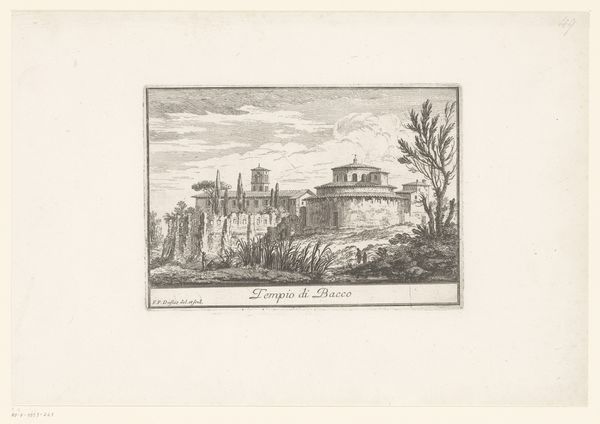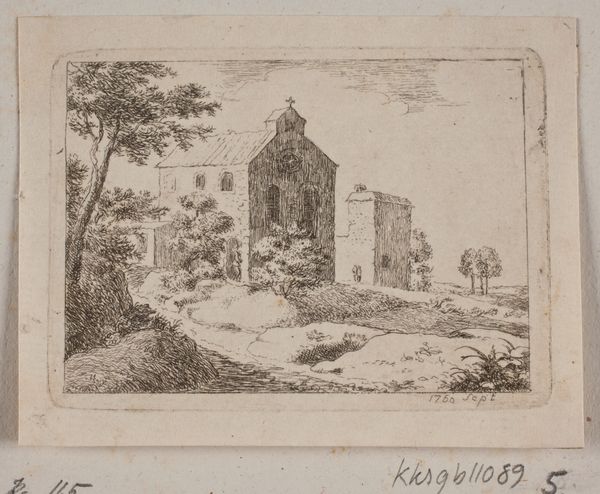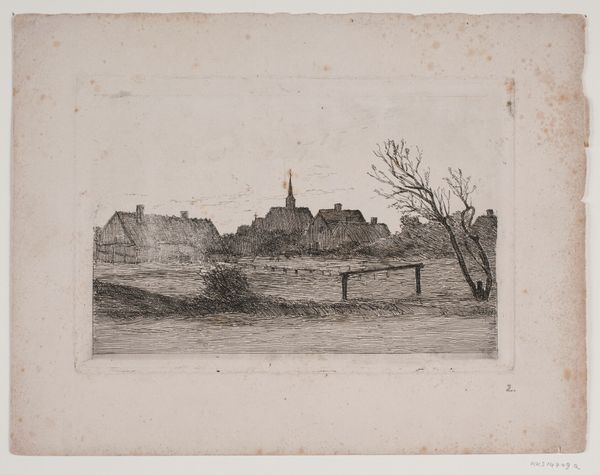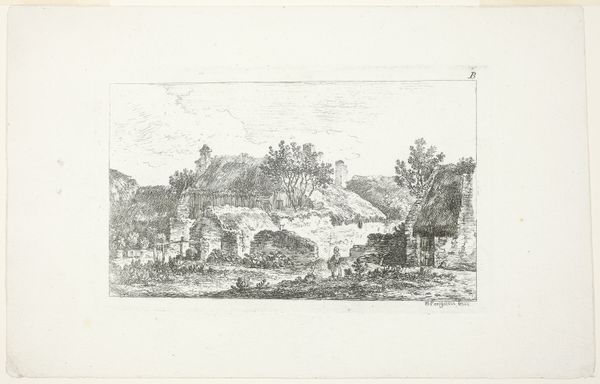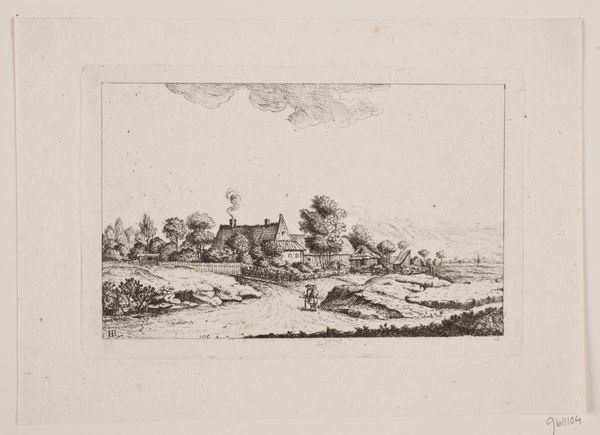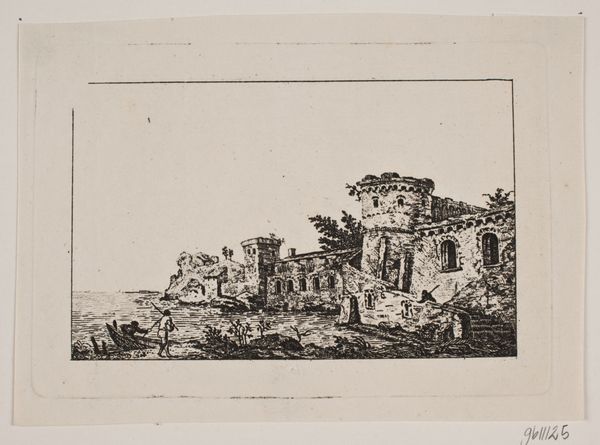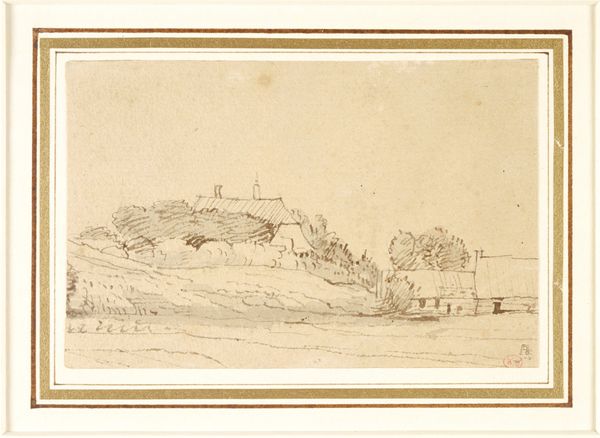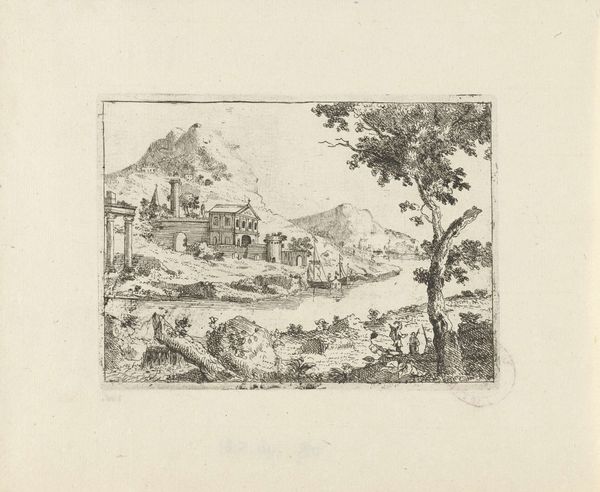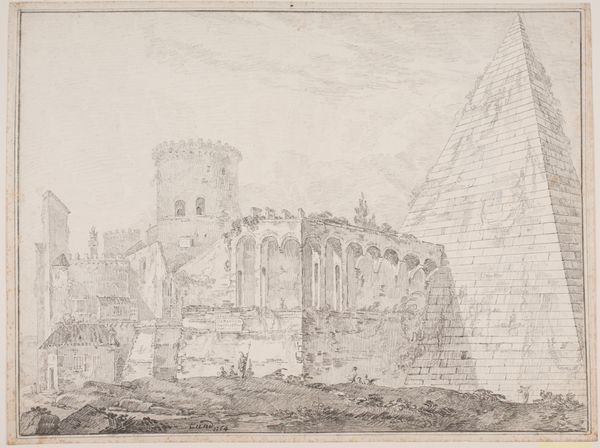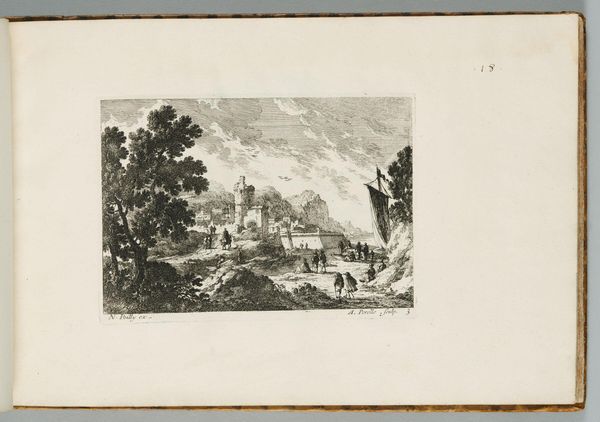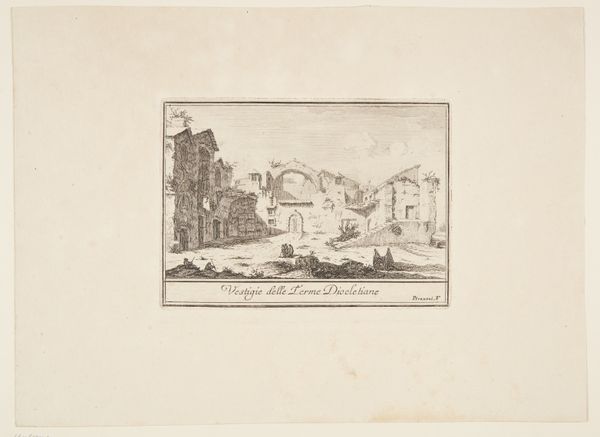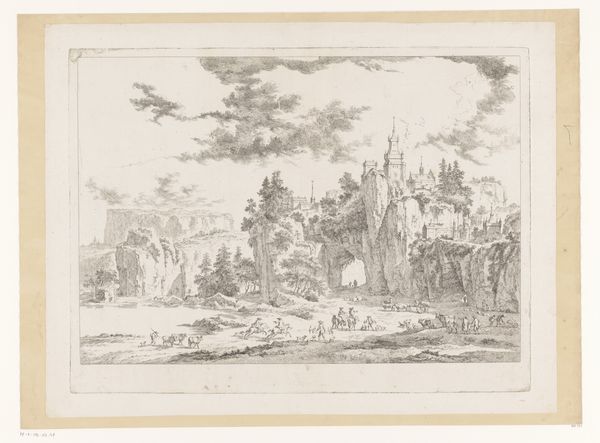
print, etching, intaglio
# print
#
etching
#
intaglio
#
landscape
#
etching
Dimensions: 94 mm (height) x 135 mm (width) (plademaal)
Curator: This is Johan Bülow’s "Landskab," created sometime between 1751 and 1828. It's a landscape print, executed through the intaglio process of etching. Editor: It's a surprisingly delicate landscape. The thin, scratchy lines create an almost dreamlike quality, wouldn't you say? There's something very gentle about the entire composition despite the architectural structures depicted. Curator: I think that gentleness stems, in part, from the printmaking process itself. The labor involved in etching is painstaking. Consider the social implications of distributing landscapes to a broader audience. Prints democratize art viewing to a certain extent, allowing this landscape to enter more homes and potentially shape perceptions of the ideal countryside for those unable to experience it directly. Editor: That’s interesting, framing the etching process itself as democratizing. I tend to see prints more in relation to the established artistic hierarchies of the time. Landscape prints served a real purpose in solidifying a burgeoning national identity and fostering civic pride. The selection of picturesque locales and the way they were depicted contributed to how people viewed and understood their surroundings. It really established a sense of place within a larger political framework. Curator: Indeed, it is about access, and access is always shaped by socio-political factors. Looking closer at the materials and technique reinforces your point too. Etching uses readily available acids to manipulate the plate; the control and reproducibility become a part of the work's message itself. Each print subtly alters its message each time a transfer occurs and each person handles it. Editor: A fascinating idea. It really underlines how this landscape contributes to a conversation about belonging, land, and the prevailing attitudes of that specific time. And really what it means for it to be exhibited and housed here at the Statens Museum for Kunst today. Curator: Exactly. Analyzing its production reveals as much about cultural values as about artistry. The choices—material and technical—always tell a story. Editor: Well, examining this work has opened new lines of inquiry for me. It encourages viewers to reflect not only on aesthetic preferences but on the historical dialogue surrounding identity.
Comments
No comments
Be the first to comment and join the conversation on the ultimate creative platform.

